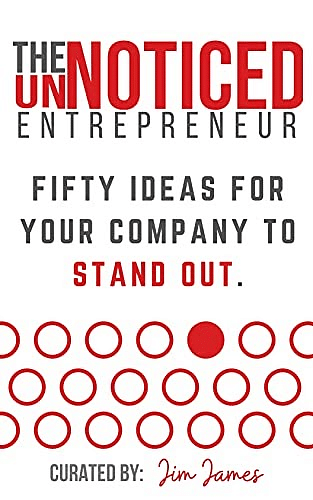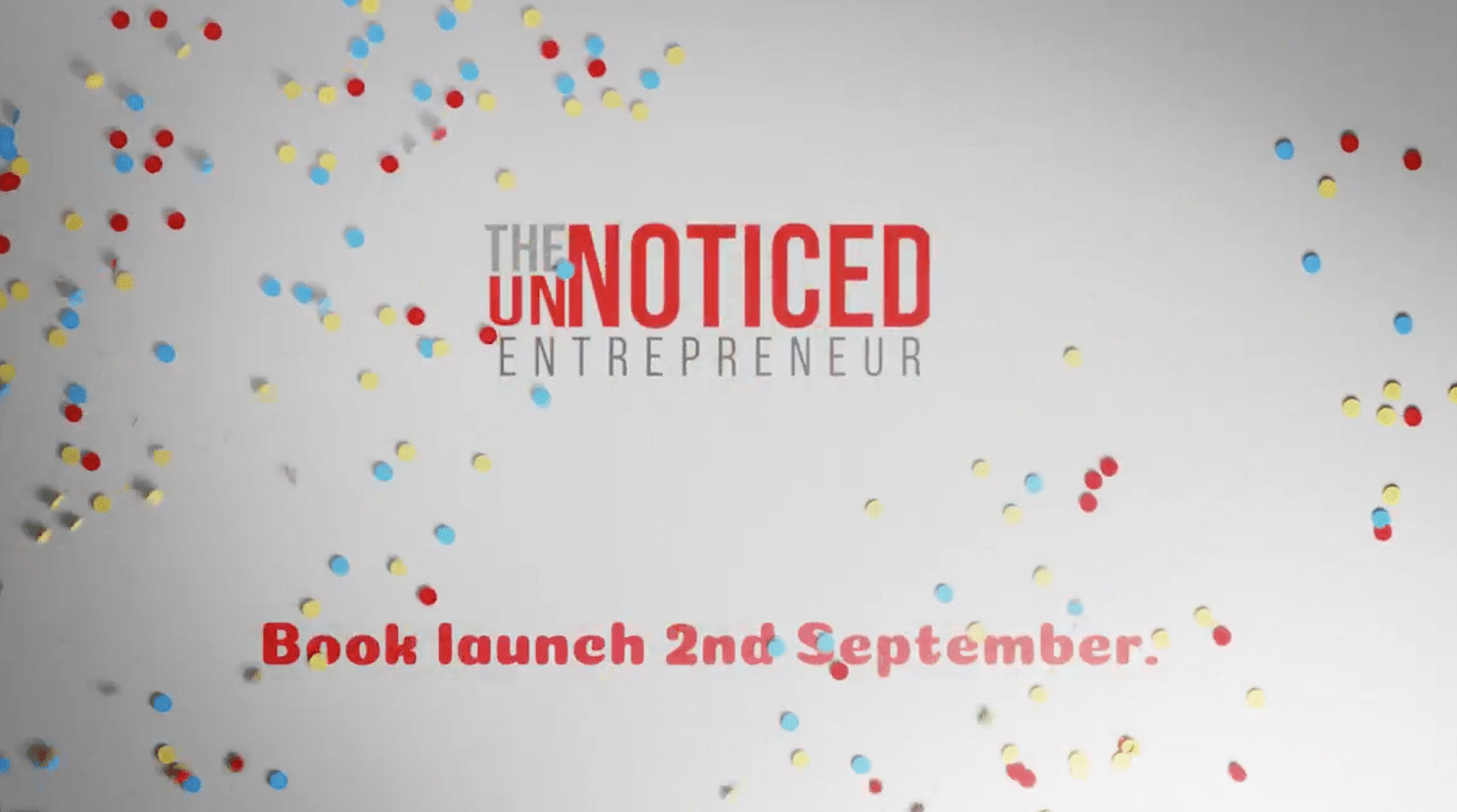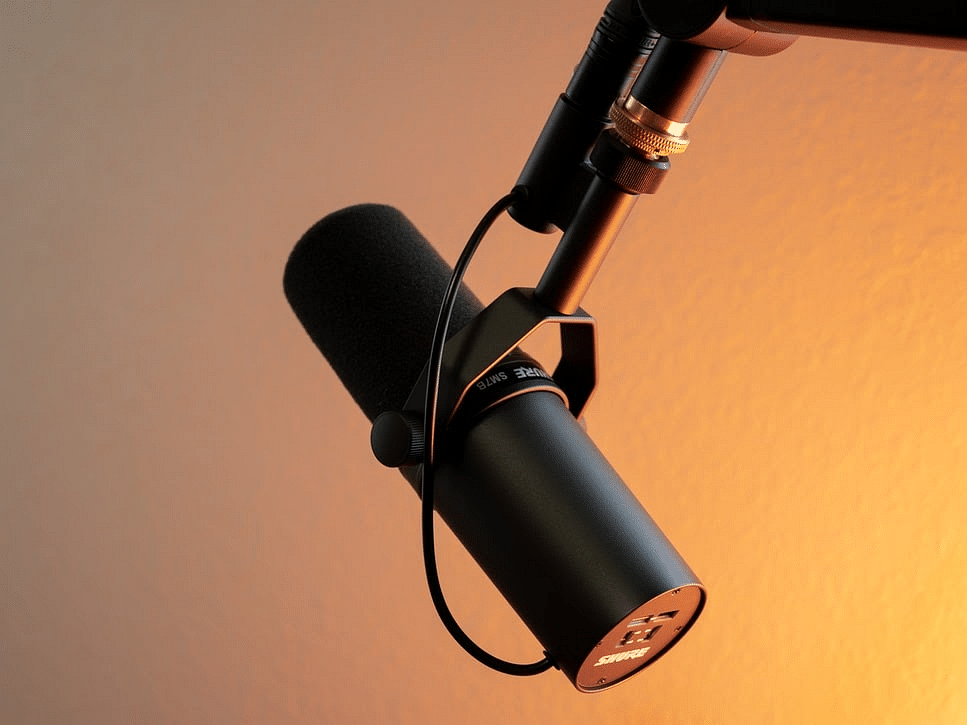
The UnNoticed Entrepreneur book and why self-publishing is worth the investment for business owners
By Jim James, Founder EASTWEST PR and Host of The UnNoticed Entrepreneur.
While I was away for a holiday vacation in Spain, I was fortunate to be able to carry on with the book that we’ve been working on. I’ve recently received a proof copy of it and on my latest podcast episode, I discussed the costs that I incurred and the process that I used to write The UnNoticed Entrepreneur book.
Image from Amazon
Doing the production, editing, layout, and publishing the way that I’ve done it, creates an opportunity for any business owner to write a book. And I wanted to share how I created my book, which is a collection of 50 articles about how entrepreneurs can get noticed.
Why Publish a Book?
The idea of publishing a book revolves around the need for authority. This is not just the case for me. Companies themselves can also gain a position of authority in an industry if they have published a book.
A book shows breadth and continuity of thought about a particular topic. It enables you to manage a conversation through several different parts so that you can create an overall narrative around something.
As we know, the word “authority” comes from “author.” For those that are running their own companies, demonstrating that they have more than just tactical knowledge is something really valuable. Big companies such as IBM and Kaizen have their corporate stories and methodologies written up. Many other organisations have books written about them. Books validate the culture and the processes within a business.
Dispelling the Common Notion on Publishing a Book
In the past, we’ve always thought that big publishing projects were the preserve of big companies or well-known authors. And that the rest of us are completely unable to create a book even though we might have a great manuscript tucked away somewhere.
However, this needs to be dispelled.
As a single business owner working on a garden shed in the UK, I have managed to put together a book of 242 pages with some 82,000 words. It’s a 7- by 10-inch book with front and back covers in full colour. The inside layout is in black and white. It’s a perfect-bound paperback with a matte finish. The overall weight is 429 grams, just underneath half a kilo. And it will have a breakeven point of some 507 e-books or 346 print books.
Screengrab from LinkedIn
As one person operating independently, I wanted to share what you can do as an individual. If you’re managing or running a bigger company, you could commission someone from your team or a freelancer to write the book. The key to creating a book is using different components and different people out there who can be tapped through the internet.
The Approach to Creating The UnNoticed Entrepreneur Book
On The UnNoticed Entrepreneur podcast, I interview entrepreneurs, experts, and technologists and talk about the different aspects of getting noticed. As of writing, I’ve already created over 340 episodes and interviewed around 80 people.
During my interviews, I had people talk about one of the five areas of my SPEAK|PR program — namely storify, personalise, engage, amplify, and know. Right at the beginning of the interviews, I already have an idea of how I want to structure the output and the information that I would obtain into these five different sections.
If you’re going to write a book and create content, the structure is the first thing to look at. This is similar to how architects look at the framework and the house’s structure before doing any surveying.
So laying out the framework was the first thing that I did. I also decided to have 80,000 words. Because the view is that you’d need around 60,000 to 100,000 words for a book to be considered a serious book.
Afterwards, I broke down my work in podcasting to get the book written. For many people, the obstacle is actually the writing process. And this is where I cheated a little bit because I didn’t write all 80,000 words. I worked with 50 guests to prepare some 70,000 words and the remaining 10,000 are my own — the words that I wrote for the introduction, and section introductions and conclusions.
Breaking Down the Process
The UnNoticed podcast that I created is a series of 20-minute interviews. Each 20-minute episode renders about 900 to 1,500 words, which translates to a one-and-a-half to a two-page article.
Image from Unsplash
This series of interviews and articles enabled me to have a sort of a building block for each chapter of the book.
I decided to have five chapters to represent SPEAK|PR. I looked for people that I could interview for 20 minutes and could give me an insight into one of the five areas that I wanted to cover in the book.
Through a platform called Descript, I make a transcript of the interview. I export the transcript and share it with my virtual author in the Philippines. For an article with 1,000 to 1,500 words, it costs me $20. The writer fashions the transcript into something that could be read, like a Word document.
In this approach, I’m making a recording, getting a transcript, and getting someone else to do the polishing.
Previously, I recorded via Hindenburg. I used its export function and sent the audio file into Otter.ai (to which my virtual assistant also has access). My VA then listened to the audio, checked the text, and made the article.
That is another way of doing it, but what I like about Descript is that I can listen to the audio and check the text at the same time. Because I can import the Zoom video file (Zoom is what I use for the interviews), I can also actually edit a video through text. It’s a very efficient way of editing and producing because I’m getting a 20-minute video, some snippets or short videos, a 20-minute audio file, and a transcript. For me, Descript has proven to be a great hero platform for production.
For The UnNoticed Entrepreneur book, I’ve chosen 50 interviews. Alecs, my VA from the Philippines, sorted them through a platform called Dabble Writer, which enables users to collaborate on a project.
All the authoring tools that I’ve used are online. Apart from what I mentioned, there are also other options such as Ulysses and Scrivener. However, these are desktop-based. As I wanted to collaborate with my VA, these tools failed the test. They’re more fully featured and you’d also need to pay a licence fee. With Dabble Writer, you only pay a monthly premium if you want to access all the features. It costs around $19 a month.
Using Dabble Writer, Alecs sorted the interviews that we’ve initially listed on a Zoho spreadsheet. She then cut and pasted the articles written by my virtual author into the platform, compiled them, and exported them as a Word document. We sent it to Kateryna, a layout artist we found through Upwork. She charged $200 for the 30 to 40-page Word document, changed the font size, and added headers. She also made an index for the back and created a table of contents using the Adobe InDesign software for auto collating and indexing. These features are not available in Dabble Writer, but they’re both obviously required in a book of the length that I’m creating.
For the book, we’ve got a print version, a PDF, and an ePUB version. The ePUB format allows the book to auto-resize depending on the audience’s Kindle devices. Take note that different platforms have different interactivity and capabilities within them.
Image from Unsplash
On the Distribution
Distribution is the next part of the publishing puzzle. For this, I decided to contract a consultant because — as someone who people go to to help them get noticed — I thought that I should learn how to get noticed in print.
I hired a lady named Sam from Swap Books and it’s quite an investment because along with the editing of the articles (which is the most expensive part of the process), she also opened my eyes to different opportunities.
I’ve already known about Kindle and have already created an Amazon account. I’ve also started down the path of creating a Kindle Desktop Publishing account. I’ve also gone to the Nielsen International Standard Book Number (ISBN) store to buy the ISBN that I needed. However, it was through Sam that I got to know the platform IngramSpark.
While Amazon goes to your Kindle, IngramSpark goes to all those other platforms that I’ve never even heard of. They have a global book distribution network of over 40,000 retailers and libraries. And by working with them, we’d be able to be on Amazon, Apple, Kobo, and Barnes and Noble. They also offer a good package: $49 for a print and an e-book, $49 for just a print book, or $25 for just an e-book. It makes it extremely affordable because you just have to take the manuscript as it is — as an ePUB or PDF — then, you simply upload it.
Both IngramSpark and Amazon also allow you to print off a physical copy. I got mine on the Monday that I got back from my holiday in Spain. It’s pretty exciting because we’ve been working on the book production for a few months already, and 12 months for the podcast.
On Revisions
With a physical copy in my hand, I was able to go to an author nearby and had her take a look at it. She found another four or five hard-to-find but significant typographical errors. When the book is in PDF, it’s pretty easy to miss some of the smaller things.
For the book, I also did the graphics on the cover. From the original version, I increased the font size of the subhead and used more two-tone colours. Online, it looked fine. But in print, it was otherwise.
The printed copy of the book cost me six pounds. Based on what I’ve mentioned, we made a few minor changes, went back to both Kindle publishing and IngramSpark, and uploaded the second version of the book. If you post your content online, you’ll have some 30 days to revise it.
Other Benefits
Creating an author profile on Amazon is one of the benefits that I hadn’t originally thought of. I recently filled that and what’s interesting is that you can also add an RSS or a really simple syndication feed. For example, you can incorporate content from your website.
Image from Amazon
For my profile, I’ve added my EASTWEST PR news page, my Jim James blog (which I’ve kept for many years when I was in China), and my Buzzsprout page.
When people find my book and my author profile, they’re going to find all the other content that I’m creating.
I also went to my LinkedIn page and added my Amazon author page under my profile. I also added a pre-order link to my The UnNoticed Entrepreneur book. On LinkedIn, you can obviously have your own posts, but you can also add sections such as awards. In that same category, there’s a space where you can put your publications.
Twelve months after starting my podcast and interviewing various individuals, I’ve now got 50 people featured in the book. We’ll be sending pre-orders to these 50 people and showing them that they’re in the book. We also plan to ask everyone to promote it to their respective networks.
Pricing, Costs, and Royalties
The book is going out on Amazon. And in the store, you can change the price per territory. In the UK, the print version will cost $13.99; In America, $18.99; in Australia, $25.
I initially thought that I had to charge unilaterally and get the price varied according to different currencies. Now, I have the liberty to make it more affordable in other countries, like India. In other territories, you can also give a discount in recognition of the reality of people’s purchasing power.
In terms of royalty, I’m going to make £5.27 if I manage to sell a printed book in the UK. Realistically, I’ll probably sell more e-books. For e-books, I’m going to make £3.60 if I sell one in the UK; £4.80 in America. The money from my book will go directly to my PayPal account.
Overall, the book has cost me some £1,800. This already covers the ISBN. Under £2,000 or $3,000, you, too, can create a book, publish it, and have it on Amazon, Barnes and Noble, and other bookstores. People can buy it either in print or an e-book.
If I can sell 507 e-books or 346 print books, then I’ve already got my money back. If I grow more than that, then I’ll be making a little bit of money. It’s not a great money-spinner but it will be long tail. It’s also great for building authority not just for me or for my SPEAK|PR theory, but also for those 50 interviewees who were part of the book. On your end, these people could be members of your staff, or customers, or partners.
The point of doing all this is creating a new platform — a long-form and authoritative platform for ideas and information that you and your company can share with your audience.
I’ve shared my journey of building The UnNoticed Entrepreneur Book hoping that you can make use of it. I’m a big fan of using multiple channels and platforms for getting noticed. And I found writing a book both exciting and rewarding. It’s also much more affordable than I could have ever imagined. So I encourage you to think about it as an opportunity to get you and your company noticed.
This article is based on a transcript from my podcast The UnNoticed Entrepreneur, you can listen here.
Cover image by Jonas Jacobsson on Unsplash.





